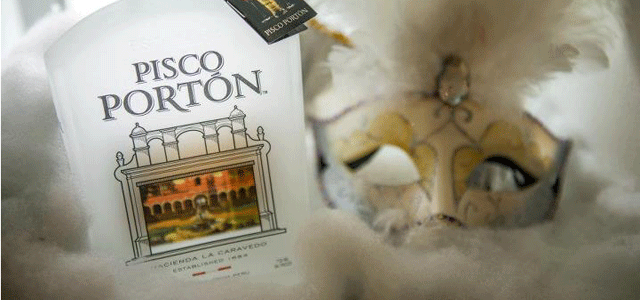Tales of the Cocktail, the spirits industry conference that just wrapped up this week, is a playground for cocktail enthusiasts. In its 10th year, it is dedicated to preserving and enhancing the drink trade (the selling kind and the imbibing kind), and this action-packed mainstay in New Orleans is the place for brands and organizations to introduce the country's best bartenders to new products and techniques.
This year, Latin spirits had ample time to shine at Tales, from seminars introducing new facets of a fledgling category like pisco, to the ancient rituals associated with mezcal production, to deciphering the flood of tequila products on the market.
Showcasing over twenty Latin events this year, many centered on education of the basics like Talking Tequila – Sensory Science & Taste, a Herradura brand seminar that taught attendees lessons like how to describe tequila. One tip? Never use the word “smooth” to describe your tequila as tequila should never actually taste smooth. That, experts say, is a copout for not knowing how to describe exceptional tequilas properly. Instead, try words like clean, balanced, peppery, and crisp.
Latin products were worked into events about new cocktail trends. There was Excellia Tequila's seminar, Night Caps: Discover Your Inner Cocktail, where guests were paired with signature tequila cocktails based on answers to a survey about their personalities. My paired cocktail was a Paloma, a blanco tequila, fresh lime juice and grapefruit soda, that satisfied my penchant for simplicity and freshness.
At Beertails: the Most Chemically Complex CKTLS, both Belgian and Latin spirits and beer were paired together in beyond-the-Michelada ways. One favorite was the Dark & Stoutly, made from ginger-habanero syrup, El Dorado 15 year demerara rum, fresh lime, and topped with Brasserie DuPont Monk's Stout. Though the pairing might sound off, it combined to form a dynamic mix of spicy and sweet flavors with chocolate notes.
There was also plenty of time for carousing, the kind that lets the spirit of Latin America shine beyond the bottle. The two most popular Latin spirits this year were, undeniably, pisco and tequila—pisco because of its new push in the U.S., tequila because of its incontestable staying power behind the American bar.
Pisco Portón's glacial masquerade party at the Tales’ headquarters Hotel Monteleone featured pisco sours, fried plaintain bites, avocado sandwiches, and festive masks. The water bash for bartenders, attended by author and Museum of the American Cocktail founder Dale DeGroff, was meant to evoke sentiments of “one of the most adventurous festivities in the world, where each year thousands climb the sacred Ausangate Mountain in the Andes of Peru, while wearing masks, dancing and honoring the life giving waters of the Peruvian glacier,” said Portón's master distiller, Johnny Schuler.
Furthering the fascination with pisco, the Pisco Pavilion at the Royal Sonesta Hotel allowed guests to taste a wide variety of piscos available in the U.S., such as BarSol, Campo de Encanto, Macchu Pisco, Piscologia, Portón and ORO. Visitors could learn how the grape-based spirit is made, and explore different varietals and techniques for mixing pisco cocktails. Try subbing out vodka or tequila in almost any cocktail for pisco, which offers a new, fruity twist on most classic drinks.
Milagro tequila also hosted its Epic Pool Party Evolved #2 on the Monteleone's roof, while Cuca Fresca and Leblon cachacas gave out street bites and cocktail go cups from a food truck on the French Quarter streets below.
We know New Orleans is a party town, but this was what we call a fiesta.


![Making Mealtime Matter with La Familia: Easy Sofrito [Video]](https://thelatinkitchen.com/wp-content/uploads/2015/10/sofrito-shutterstock__0-500x383.jpg)
![Easy Latin Smoothies: Goji Berry Smoothie [Video]](https://thelatinkitchen.com/wp-content/uploads/2015/12/goji_berry-shutterstock_-500x383.jpg)
















![Fun and Fast Recipes: Fiesta Cabbage Salad [Video]](https://thelatinkitchen.com/wp-content/uploads/2015/11/fiesta_cabbage_slaw-shutterstock_-500x383.jpg)









